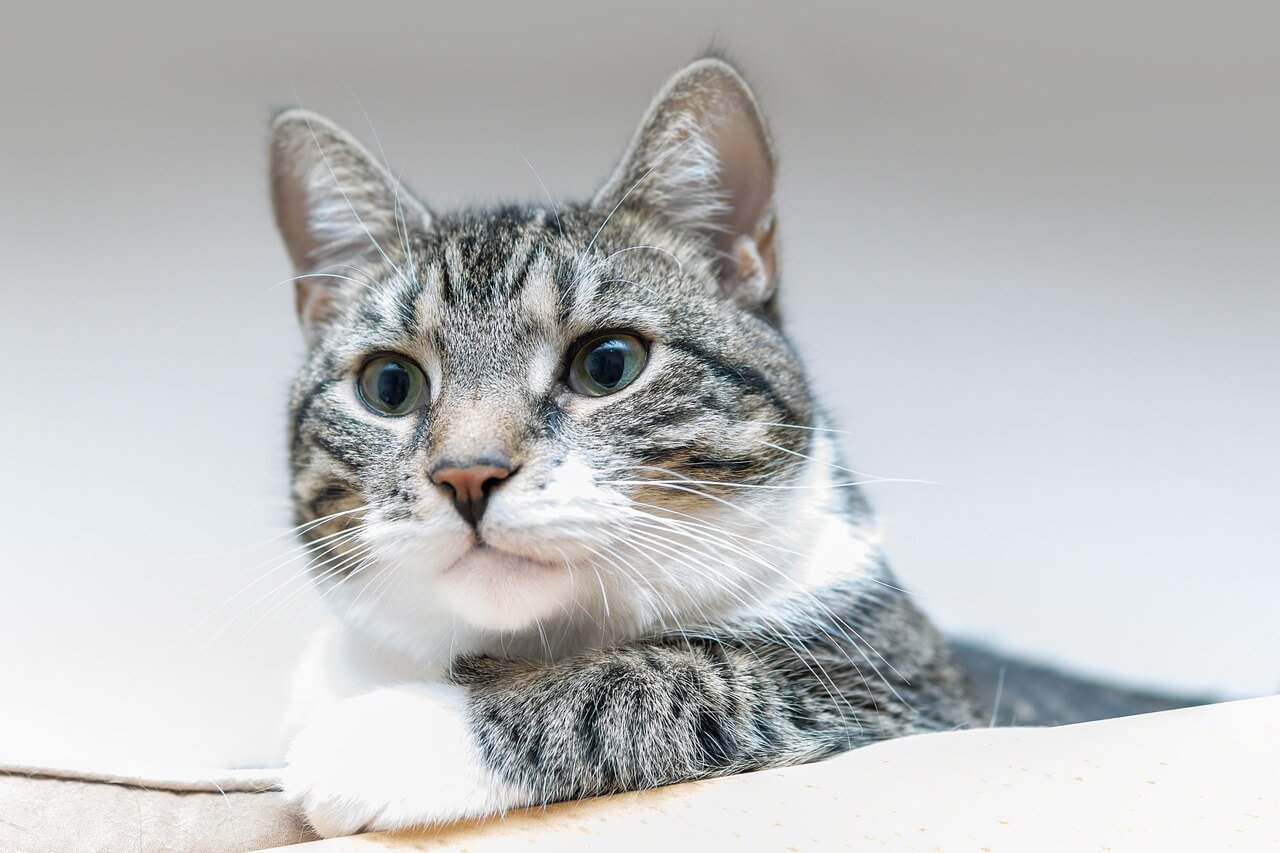How Can You Tell If a Cat Has a Fever?
Cats are masters at hiding discomfort, and detecting a fever in your feline friend can be tricky. Unlike humans, cats rarely show obvious signs of illness until the condition becomes severe. A fever is often a sign that their body is fighting an infection or dealing with inflammation, but how do you know if your cat is running a temperature? Understanding the subtle behavioral and physical cues can help you identify a potential fever early on. In this guide, we’ll explore the signs to watch for, how to check your cat’s temperature safely, and what steps to take if you suspect your furry companion is unwell.
Signs That Your Cat May Have a Fever
While cats are experts at masking pain, there are certain behaviors and physical changes that can indicate they’re running a fever. Keep an eye out for these telltale signs:
Lethargy and Reduced Activity:
A cat with a fever may seem unusually tired or reluctant to move around. They might spend more time sleeping than usual.Loss of Appetite:
Cats often lose interest in food when they’re feeling unwell. If your cat skips meals or refuses treats, it could be a red flag.Warm Ears or Paws:
While not always reliable, warm ears or paws can sometimes suggest a higher body temperature.Shivering or Trembling:
Shivering is a common response to fever in cats, as their body tries to regulate its temperature.Increased Heart Rate:
A rapid heartbeat may accompany a fever. You can feel your cat’s heart by gently placing your hand on their chest.
If you notice any combination of these symptoms, it’s important to investigate further. Early detection can make all the difference in helping your cat recover quickly.
How to Check Your Cat’s Temperature Accurately
Checking your cat’s temperature is the most reliable way to confirm whether they have a fever. Here’s how to do it safely and effectively:
Use a Digital Thermometer:
Invest in a digital thermometer designed for pets. Avoid using glass thermometers, as they can break and pose a risk.Choose the Right Location:
The most accurate method is to take your cat’s rectal temperature. This may sound daunting, but it’s quick and safe when done correctly.Prepare Your Supplies:
Have a lubricant (like petroleum jelly), a towel, and treats ready before starting. This ensures a smooth process for both you and your cat.Stay Calm and Reassuring:
Speak softly and handle your cat gently to keep them calm during the procedure. Wrapping them in a towel can also help prevent squirming.Interpret the Results:
A normal cat’s temperature ranges from 100.5°F to 102.5°F (38°C to 39.2°C). Anything above this range may indicate a fever.
By following these steps, you can confidently monitor your cat’s health and seek veterinary care if needed.
Check this guide 👉Cat Scratch Fever: Best 7 Expert Tips!

Symptoms of a Cat Fever | What You Should Do |
|---|---|
Lethargy and reduced activity | Monitor closely and limit stress |
Loss of appetite | Offer small portions of wet food |
Warm ears or paws | Check temperature with a thermometer |
Shivering or trembling | Provide warmth with a blanket if needed |
Increased heart rate | Contact your vet for professional advice |
Common Causes of Fever in Cats
A fever in cats is often a sign that their immune system is working hard to fight off an issue. Understanding the potential causes can help you address the root problem.
Infections:
Bacterial, viral, or fungal infections are common culprits behind fevers in cats. Upper respiratory infections, in particular, are frequent.Inflammatory Conditions:
Conditions like pancreatitis or inflammatory bowel disease can trigger a fever as the body responds to inflammation.Trauma or Injury:
Physical injuries, such as wounds or fractures, may lead to a fever as part of the healing process.Toxins or Poisoning:
Exposure to harmful substances, such as plants or chemicals, can cause a fever along with other symptoms like vomiting or diarrhea.Vaccinations:
Some cats develop a mild fever after receiving vaccinations, which typically resolves within a day or two.
Identifying the underlying cause of your cat’s fever is crucial for ensuring proper treatment and recovery.
When to Seek Veterinary Care for a Cat with a Fever
While some fevers resolve on their own, others require immediate attention. Knowing when to consult your vet can save your cat from unnecessary suffering.
Fever Lasting More Than 24 Hours:
If your cat’s fever persists beyond a day, it’s time to contact your veterinarian for further evaluation.Severe Symptoms:
Difficulty breathing, seizures, or collapse are emergency signs that warrant immediate care.Unexplained Weight Loss:
Significant weight loss alongside a fever could indicate a serious underlying condition.Behavioral Changes:
Extreme aggression, hiding, or disorientation may signal a worsening health issue.Previous Medical History:
Cats with chronic conditions like diabetes or kidney disease are at higher risk and should be seen promptly.
Prompt veterinary intervention ensures your cat receives the treatment they need to recover fully.
Additional Tips for Monitoring Your Cat’s Health
Keeping an eye on your cat’s overall health can help you catch a fever or other issues early. These tips will guide you in observing your cat’s well-being effectively.
Track Daily Habits:
Note changes in eating, drinking, or litter box habits. Sudden shifts can indicate underlying health problems.Observe Grooming Behavior:
Cats are meticulous groomers. A lack of grooming or excessive licking may signal discomfort or illness.Monitor Social Interactions:
Pay attention to how your cat interacts with family members or other pets. Withdrawal or aggression can be signs of distress.
By staying attentive to these details, you’ll be better equipped to notice when something isn’t right and act promptly.
Home Remedies to Comfort a Cat with a Fever
While professional veterinary care is essential, there are ways to comfort your cat at home if they have a mild fever. These remedies can provide temporary relief as you prepare for a vet visit.
Provide Hydration:
Encourage your cat to drink water by offering fresh bowls or using a pet water fountain. Dehydration can worsen their condition.Create a Cozy Space:
Set up a quiet, warm area with soft blankets where your cat can rest comfortably without disturbances.Use Calming Techniques:
Play soothing music or use pheromone diffusers to reduce stress and help your cat relax.Offer Nutritious Food:
Serve small portions of wet food or chicken broth to entice your cat to eat while they’re unwell.Avoid Overhandling:
Give your cat space to recover, as excessive handling may increase their stress levels.
These simple steps can make your cat feel more comfortable while you arrange for professional care.
Preventive Measures to Keep Your Cat Healthy
Preventing illnesses that could lead to fevers is key to maintaining your cat’s long-term health. Proactive measures can reduce the risk of infections and other conditions.
Schedule Regular Vet Checkups:
Annual or biannual visits to the vet help detect potential issues before they become serious.Keep Vaccinations Up-to-Date:
Ensure your cat receives all necessary vaccines to protect against common infectious diseases.Maintain a Clean Environment:
Regularly clean your cat’s living space, food bowls, and litter box to minimize exposure to harmful bacteria.Limit Exposure to Toxins:
Remove toxic plants, chemicals, and small objects that could harm your curious feline.Provide a Balanced Diet:
Feed your cat high-quality food that meets their nutritional needs to support a strong immune system.
By adopting these preventive practices, you can help your cat stay healthy and reduce the likelihood of fevers or other illnesses.
Frequently Asked Questions About Cat Fevers
What is considered a normal temperature for a cat?
A healthy cat’s temperature typically ranges from 100.5°F to 102.5°F (38°C to 39.2°C).
Can I give my cat medication for a fever?
Never give your cat human medications like ibuprofen or acetaminophen, as they can be toxic. Always consult your vet first.
How can I comfort my cat with a fever?
Provide a quiet space, fresh water, and gentle reassurance to help them feel safe and supported.
Is shivering always a sign of a fever?
Not necessarily. Shivering can also occur due to cold temperatures or anxiety, so it’s important to check their temperature.
What should I do if my cat refuses to eat?
Encourage hydration and offer small portions of wet food. If they don’t eat for more than 24 hours, contact your vet.
Taking Action for Your Cat’s Health
Detecting a fever in your cat requires patience, observation, and a keen understanding of their behavior. By recognizing the signs early and taking appropriate steps, you can ensure your furry friend receives the care they need to recover. Remember, a fever is often a symptom of an underlying issue, so don’t hesitate to seek veterinary advice if you’re unsure. With prompt attention and proper treatment, your cat can bounce back to their playful, energetic self in no time. Stay vigilant, stay informed, and give your cat the love and care they deserve!
Understanding Bone Supplement for Cats: Best 7 Expert Tips! – Safe, vet-approved guidance for strong feline bones & balanced nutrition.
Bone Supplement for Dogs: Best 7 Expert Tips! – Expert guide to calcium, collagen & bone health for every life stage.
Understanding Can Cats Get Sunburn: Best 7 Expert Tips! – Protect your feline from UV damage with vet-backed prevention strategies.
How to Train a Seizure Alert Dog: Best 7 Expert Tips! – Learn expert-backed steps to nurture natural instincts into reliable, life-saving seizure alerts.





